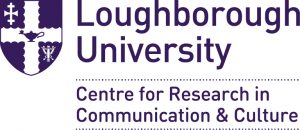
Dr Michael Higgins
Senior Lecturer in the School of Humanities at the University of Strathclyde.
His books include Media and Their Publics (Open UP) and La Leadership Politica (Carocci, co-authored). His forthcoming book, Belligerent Broadcasting (Routledge, with Angela Smith), is on the discourses and performances of anger in unscripted broadcasting.
Email: michael.higgins@strath.ac.uk

Section 2: Politics
- Rhetoric of excess
- Myth versus fact: are we living in a post-factual democracy?
- Destroying and building democracy, a German view
- Public personalities in the EU debate: elites vs. the majority and Bullingdon resurgent
- Healthier ever after? The NHS as a campaign issue
- Wales, immigration, news media and Brexit
- The referendum campaign and the public’s constitutional understanding
- The EU referendum and the Country of Origin principle (COO)
- Calming the storm: fighting falsehoods, fig leaves and fairy tales
The place of Scotland in the narrative of this election was assured as soon as the results became apparent, and the UK-wide vote to leave cast into stark contrast a Scottish vote of 62% in favour of Remain. With memories of the referendum for Scottish independence from two years earlier still fresh in the mind, early analyses raised the alienation of the Scottish electorate – even more than the Remain-supporting voters of London and Northern Ireland – and the implications this may have for the survival of the United Kingdom. Placing for now aside the now-likely second independence referendum, I want to explore the considerable influence the Scottish factor had over the campaign itself.
the Scottish experience of the two referendum campaigns suggests that the tone is as much determined by assessments of public opinion and appetite for rancour, as well as such factors as the status and performative style of the political personas involved.
The political ramifications of what academics routinely refer to as the “personalisation of politics” were rarely more apparent than in this election. Prime Minister David Cameron presumed to speak for Remain, and his most prominent opponent in Leave was former-Conservative Mayor of London Boris Johnson. This was to the disadvantage of the UK Labour Party, and Jeremy Corbyn’s visibility was undermined by this “blue-on-blue” tussle with its ramifications for the Prime Ministership. Where Scotland figured in the personalisation of the campaign was in the appearance first of Scottish First Minister Nicola Sturgeon, and then to a lesser extent of Scottish Conservative Leader Ruth Davidson. Sturgeon was invited to participate in one of the televised debates along with Leave star Boris Johnson, having already become a high-profile personality in UK politics (Higgins and McKay, 2015), bearing a political mantra of an independent Scotland within Europe (Smith, 2016).
However, a chief point of attack on Sturgeon related to the frame of “Project Fear” that had been mobilised against her and her party during the previous Scottish referendum. This expression had been internalised in that campaign within the unionist Better Together campaign to refer to negative communication tactics, on the basis that those in government or supporting the constitutional status quo are able to generate uncertainty around the implications of change. This was leapt upon by opponents including Sturgeon as a damning and cynical admission. However, this negatively charged phrase was revitalised at the UK level and used to dismiss the warnings of Remain. This was at its most explicit in Boris Johnson’s debate clash with Sturgeon. Using the technique of epitrope to cite Sturgeon’s prior description of the Better Together campaign as “miserable, negative and fear-based – and fear-based campaigning of this kind starts to insult people’s intelligence” (quoted in Phipps, 2016), Johnson sets Sturgeon as previously opposed and now engaged in a politics of malign negativity. While just one example, this formed part of a more broadly expressed set of concerns about the aggressiveness of the debate. Reflecting on the death of Labour MP Jo Cox, London Mayor Sadiq Khan characterised the referendum campaign as a “climate of hatred, of poison, of negativity, of cynicism” (Mason, 2016). While undoubtedly sincere and warranted by the tragic circumstances, this also drew upon longer-term narratives around the retreat of civility in public discourse (see Higgins and Smith, forthcoming).
Ironically, the debate in Scotland was comparatively mild-mannered and courteous: even described as “tepid” by BBC political commentator Brian Taylor. In large part, this was because of well-founded assumptions that EU membership was comparatively popular in Scotland, translating to support across the majority of politicians. This left a lack of dominant personalities around which to animate any clashes. Leader of the Scotland Leave campaign was former Labour MP Tom Harris, with support from sole Scottish UKIP MEP David Coburn. Significantly, all of the major political figures in Scotland – from party leaders including Sturgeon and Davidson to grandees Gordon Brown, Alex Salmond and Alistair Darling – were united behind the Remain side.
It remains to be seen whether this campaign signals the shift from what Mouffe (2005) describes as an “agonistic” clash of ideas to an “antagonistic” trade of insult and spite. It may be that the bipolar character of a referendum, with a comparative loosening of the constraints of party discipline, encourages a more rancorous mode of engagement; and the Scottish example properly was cited as evidence of an on-going pattern of deterioration. However, more likely, the Scottish experience of the two campaigns suggests that the tone is as much determined by assessments of public opinion and appetite for rancour, as well as such factors as the status and performative style of the political personas involved.

European Commission President Jean-Claude Juncker, left, greets Scottish First Minister Nicola Sturgeon upon her arrival at his office at EU headquarters in Brussels, Wednesday, June 29, 2016. Sturgeon is in Brussels to meet with EU officials. Scottish voters overwhelmingly chose to remain in the European Union but were drowned out by English voters. Sturgeon has indicated there may be a new referendum on Scottish independence. (AP Photo/Geert Vanden Wijngaert)


